June 11, 2025
Contributor: Supriyono | Editor: Dadi Darmadi | Photo: Virda Lalitya Umam
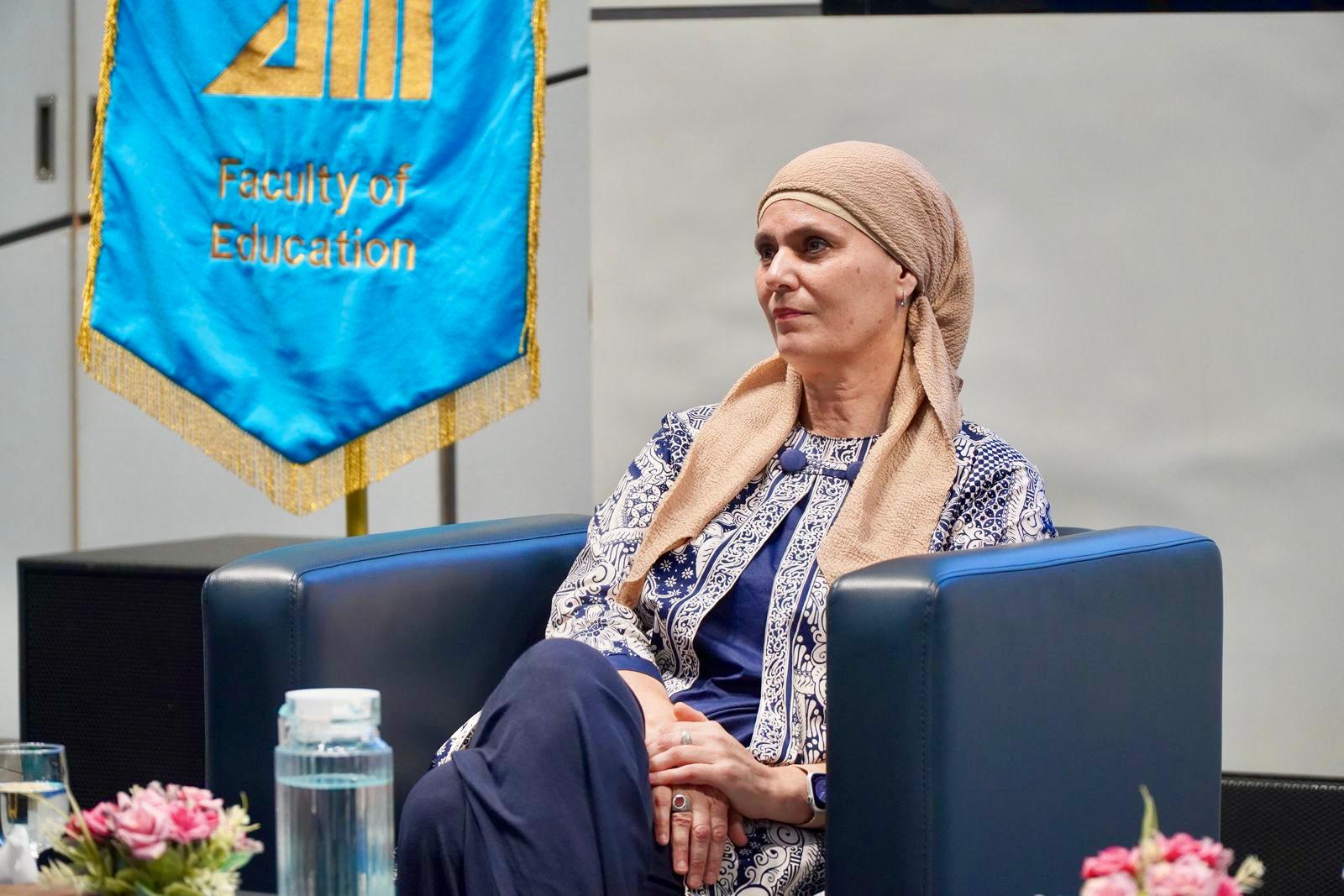
In an engaging Lunch Talk #41 at the Faculty of Education titled “Environment & Sustainability in Higher Education: Theory and Practice,” Prof. Anna M. Gade, a Visiting Professor at UIII from the University of Wisconsin-Madison, USA, challenged conventional narratives around environmental studies and sustainability in academia, reflecting critically on the origins, definitions, and future directions of environmental education.
Starting with a narrative familiar to North American academia, Prof. Gade traced the roots of environmental studies to the field of environmental science, a discipline often grounded in natural resource management and natural sciences such as chemistry, biology, and earth sciences. However, she highlighted a critical limitation of this framing: the absence of people.
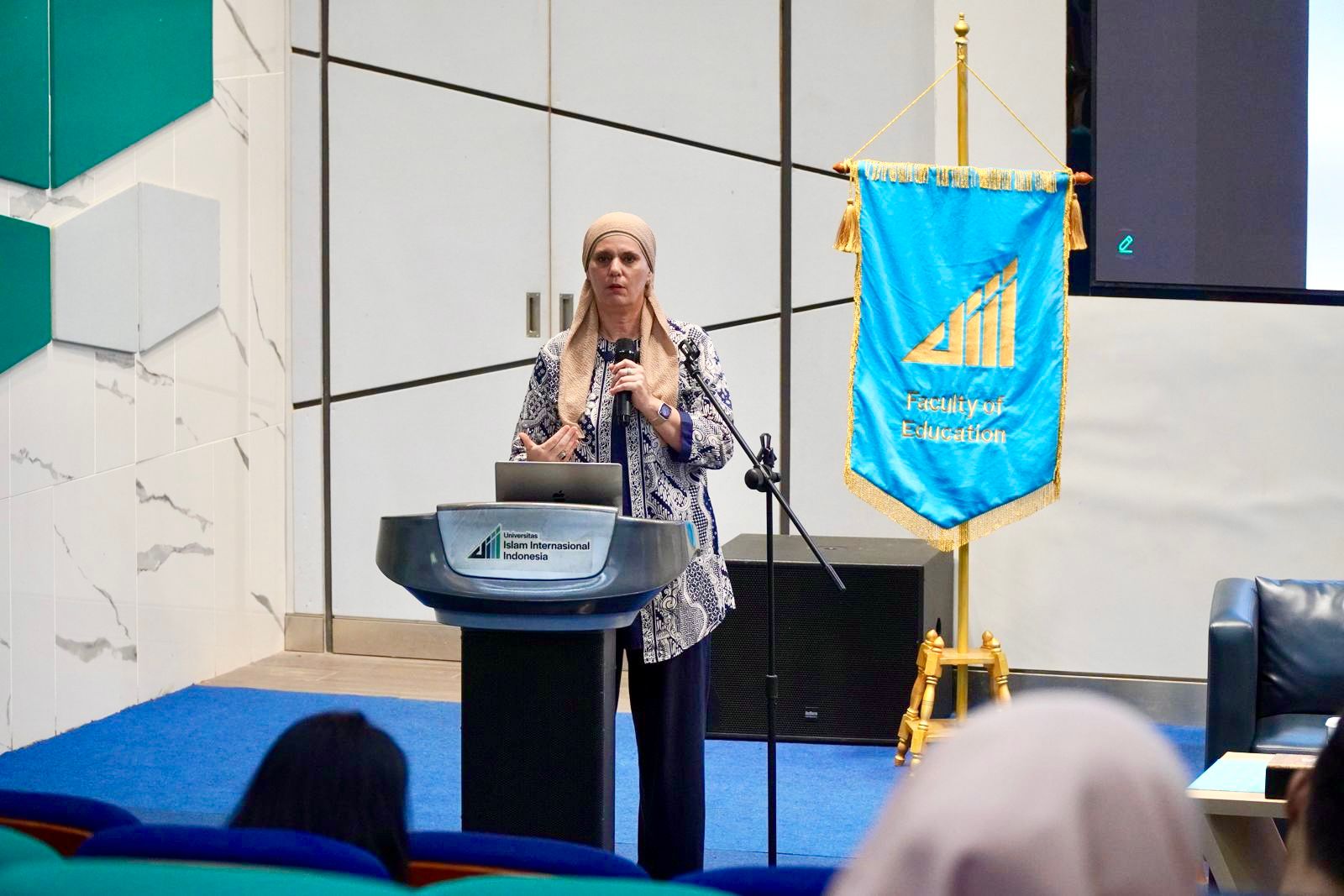
“The interaction of biotic and abiotic factors is how environment is formally defined. But where are people in this picture?” Prof. Gade asked a provocative question, as she portrayed a slide of a picture of mangrove forest in an Indonesian beach describing what environment is. This question underscored a persistent tension in environmental education the divide between scientific and humanistic approaches.
She argued that environmental studies must go beyond science to encompass humanities, social sciences, ethics, and cultural understandings, particularly for regions like Indonesia, where local knowledge and community practices shape environmental realities. She emphasized that even though the terminology of “environment” might seem recent, its conceptual roots, especially within Islamic traditions, reach back centuries.
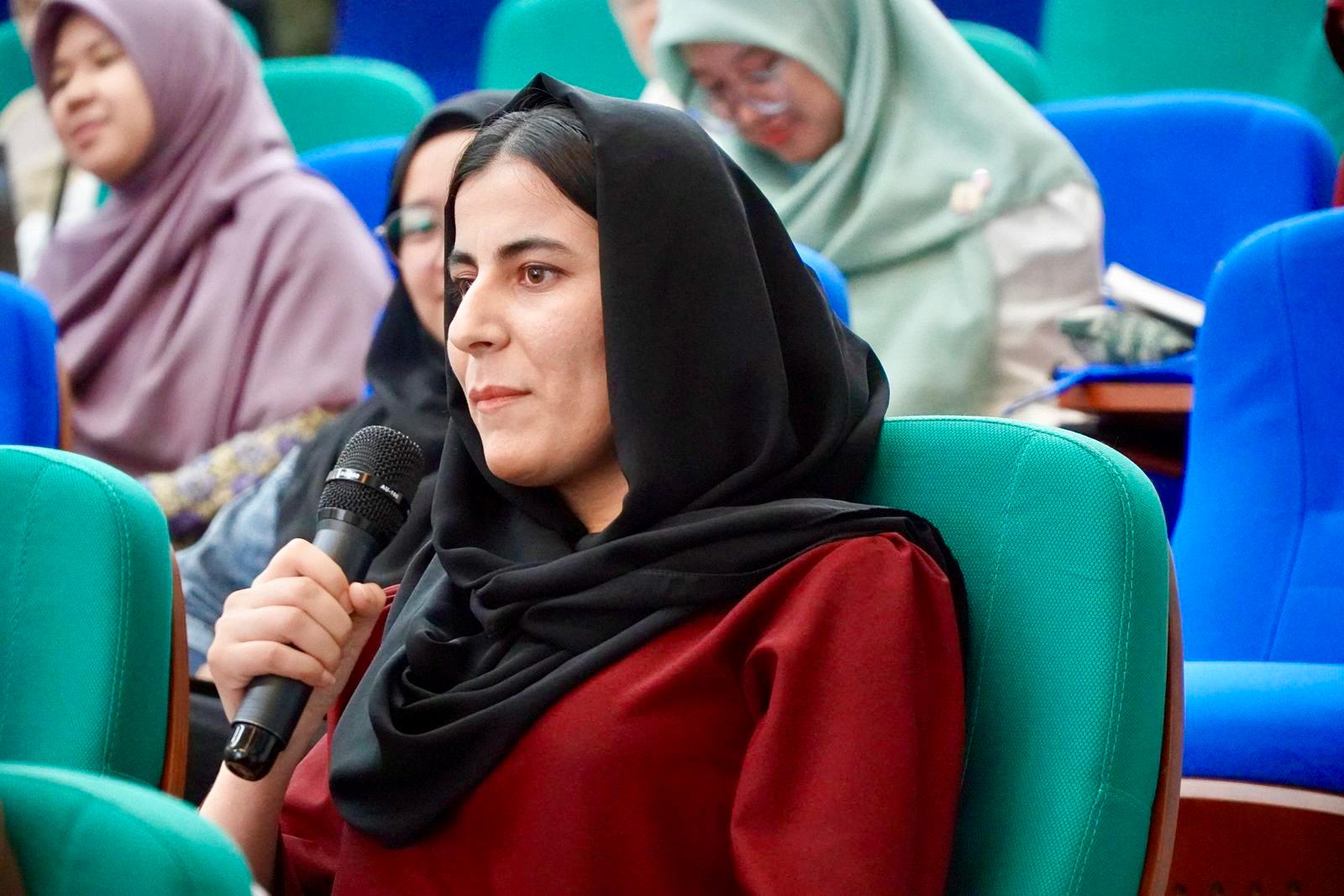
A key takeaway from Prof. Gade’s talk was her assertion that environmental studies are fundamentally interdisciplinary. “It’s not just about adding people into the mix of natural sciences,” she said. “It’s about genuinely integrating diverse fields — from theology to engineering, from ethics to biology — to form a comprehensive understanding of our environmental challenges.”
Using the powerful symbol of the tiger, she illustrated how the survival of charismatic species like the Sumatran tiger is interwoven with cultural practices, local governance, and community relationships with nature. This, she argued, is where humanistic disciplines like religious studies and ethics become essential partners to science in environmental education.
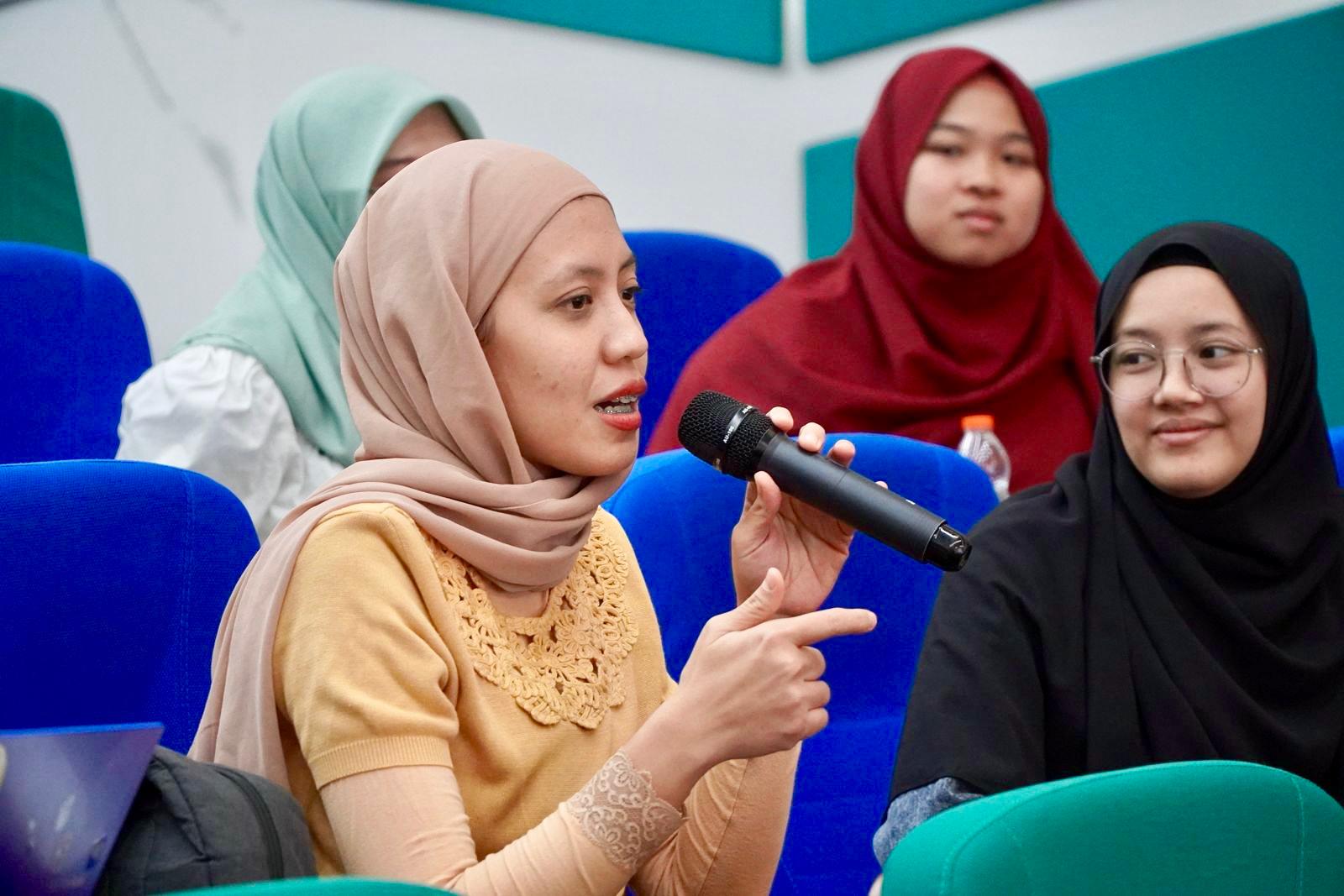
Prof. Gade also critiqued the emerging discourse around sustainability, a concept whose foundations lie in international development, business, and systems thinking. She questioned the reliance on frameworks such as the Brundtland Report or simple lists of Sustainable Development Goals (SDGs), noting that while these offer practical guidance, they often lack deep ethical grounding.
“Sustainability becomes more than just an unstable word,” she reflected. “It calls us to consider our obligations to future generations, to rethink systems of production, and to integrate complex social, economic, and environmental considerations into our curricula.”
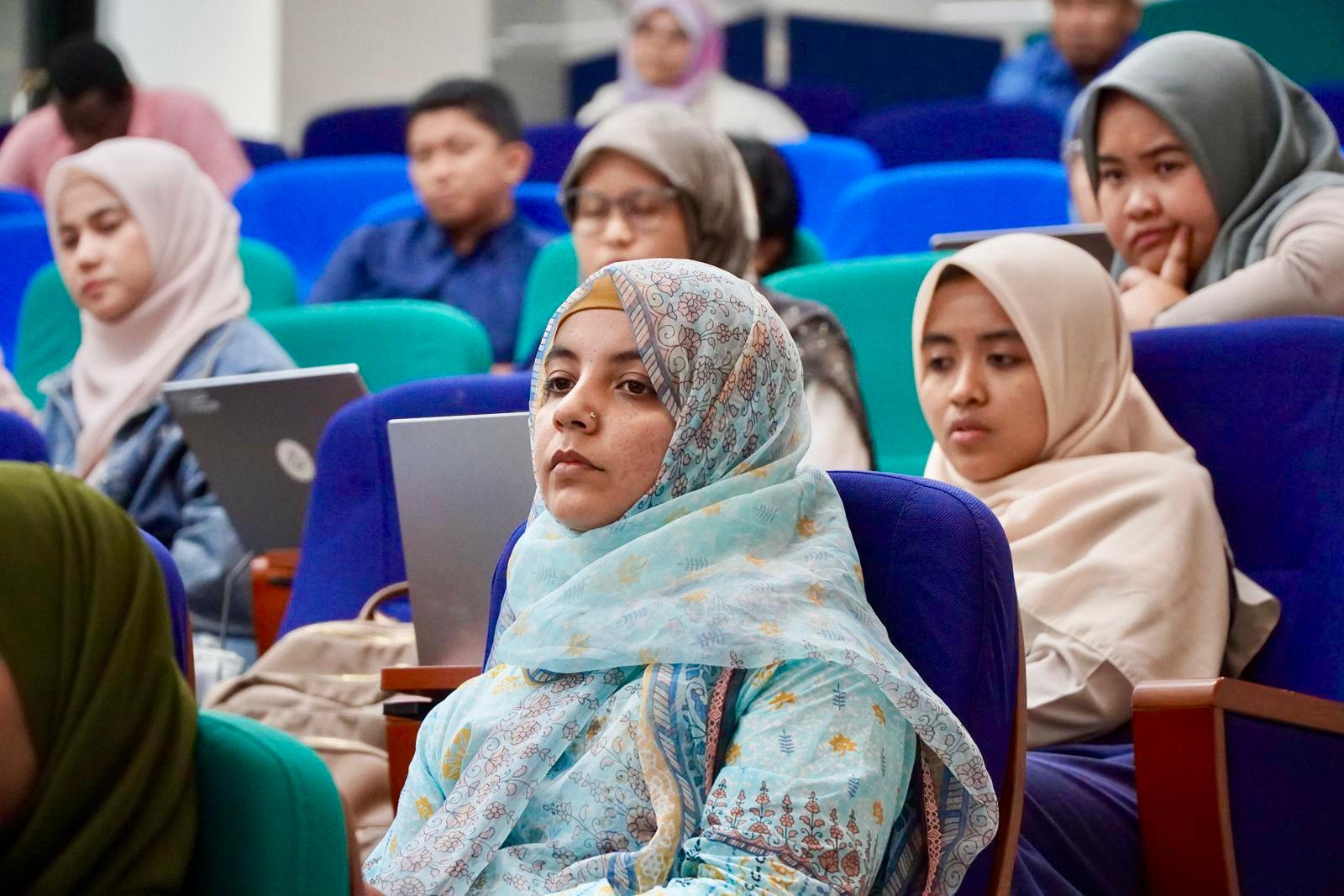
Prof. Gade’s presentation was not only an academic reflection but also a provocation for UIII and other universities in Indonesia. She urged educators to design programs that are genuinely interdisciplinary, that draw on Islamic intellectual traditions, and that embed ethical reasoning into environmental and sustainability studies.
Her message was clear: to address today’s environmental crises, higher education must not merely replicate models from the Global North but must cultivate approaches that are locally grounded, ethically robust, and inclusive of diverse worldviews. This aligns perfectly with UIII’s commitment to integrating global insights with local and Islamic perspectives, ensuring environmental education is both meaningful and transformative.
Universitas Islam Internasional Indonesia